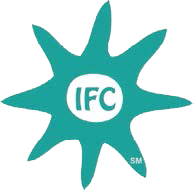For decades scientists warned that a global epidemic caused by a previously unknown virus was all but inevitable. Despite periodic outbreaks of swine flu, bird flu, SARS, and Ebola, their warnings were not heeded. Then came the novel coronavirus. As of now, the virus has officially claimed over 600,000 American lives, and sickened tens of millions, sad numbers repeated around the globe. Covid-19 removes all doubt about what can happen when a clear and present threat is ignored or not taken seriously. But Covid-19 is just one such threat. Our aging population is another. One way to imagine the impact of aging on American families is to look at the actual impact of Covid-19 on family caregivers.
Covid-19 was especially deadly to people with chronic health conditions, something that is very common among older people. It is well known that American society will reach “peak aging” over the next 10 or so years as more than 70 million baby boomers enter the twilight of their lives. A typical person reaching the age of 65 requires on average, two years of care with the activities of daily life before passing away. Who will provide the enormous amount of care all these old boomers will need? The answer in most cases is their families. Yet, we as a society are still not talking about this looming challenge, still not thinking through the implications, still not taking it seriously. Covid-19 should be a wake-up call. It didn’t just overwhelm hospitals. It overwhelmed family caregivers, who provide over 70% of all care and are the “last mile” in healthcare delivery.
A recent survey compared Covid-19 family caregivers to non-family caregivers in terms of impact on physical and psychological health as well as financial well-being. “[F]amily caregivers reported higher anxiety, depression, fatigue, sleep disturbance, lower social participation, lower financial well-being, increased food insecurity, and increased financial worries.” Covid-19 may be providing a preview of what family members who provide care—typically women—may face in huge numbers as rapid aging causes more and more older relatives to need care. In fact one purpose of this research was to point out the lack of attention being given to the issue of caregiver vulnerability. There are many lessons to be taken from the pandemic, but one of them must be the need to prepare families for the huge growth in family caregiving that is almost certain to happen as our society enters a period of rapid aging—along with the responsibilities, stresses, and risks that come with the caregiving role.
-Harold
